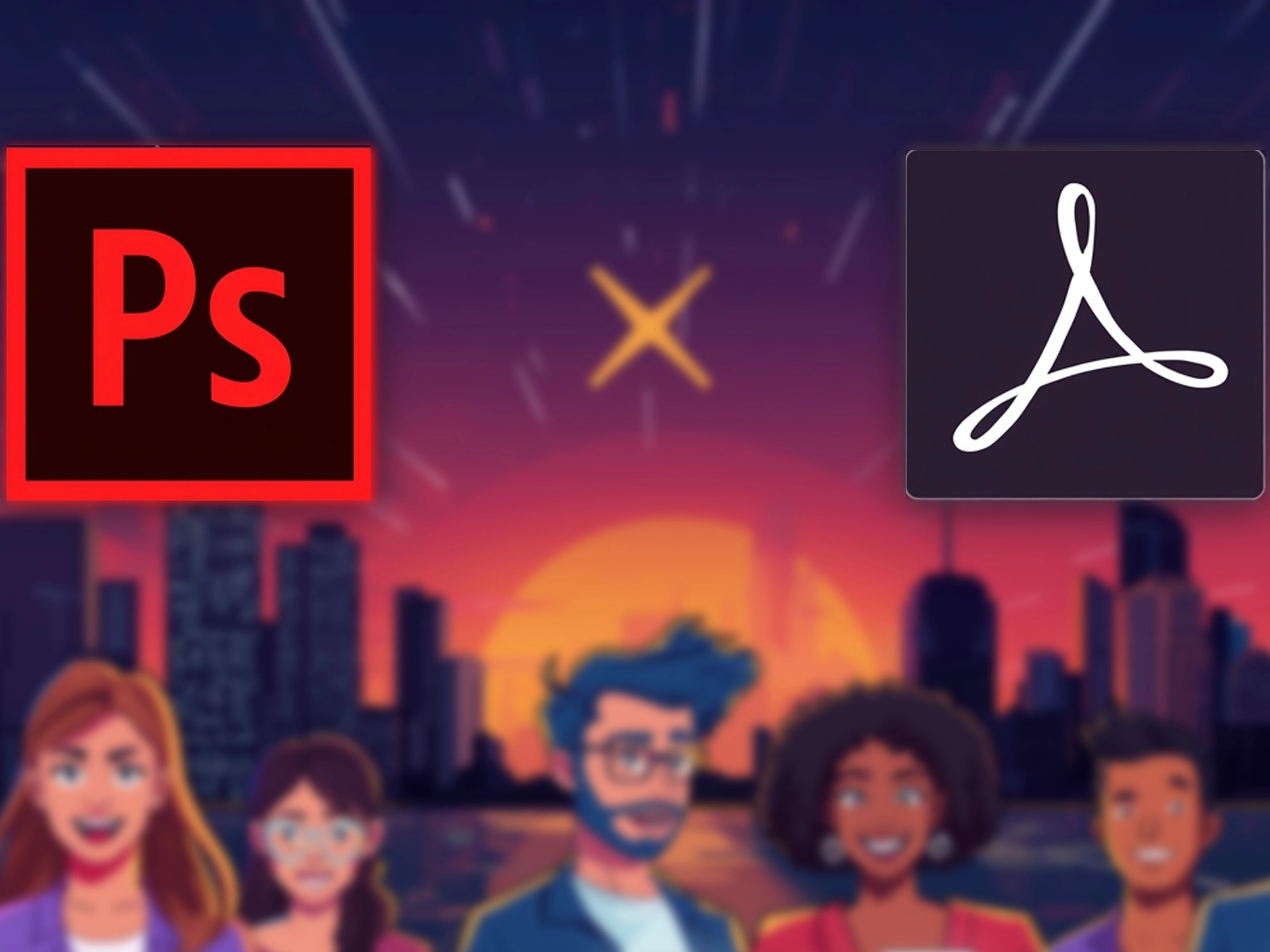
How conversational AI is changing the economics of paid search

How duplicate content reduces brand visibility in AI Search

Adobe announces integration of Photoshop, Express, and Acrobat features into ChatGPT

9 minutes
From lead generation to click-through landing pages, not all landing pages are created equal. Learn the main types, review examples, and understand how to choose the right one for your goals.
When someone clicks on an ad or link, where they land often determines whether they sign up, buy a product, or leave the page.
That’s why choosing the right landing page type when setting up a marketing campaign is just as important as the traffic source.
In this article, we’ll look at the main types of landing pages, show you where you can use them in your campaigns, and highlight the elements that make each type effective.
Every landing page has one goal: to move the visitor closer to conversion.
But not all conversions are the same.
Sometimes, you aim for an immediate sale. Other times, the goal is softer: to collect an email, generate interest, or guide potential customers toward a webinar. That’s why a single universal landing page is not enough.
Each type of landing page must be designed for a specific role in the sales funnel:
By choosing the right type of landing page for a specific stage of the funnel, visitors feel that the page is made just for them. And when the user experience matches their intentions, they are more likely to become your customers.
Now that we understand the importance of different landing page types, let’s review them one by one.
A sales landing page is the most direct of all types. Its purpose is simple: close a sale or secure a subscription.
This type is ideal when promoting something specific, such as:
The key feature of sales landing pages is that every element is focused on a specific transaction:
The main goal of a squeeze page is to obtain the visitor’s contact information, usually an email address.
Unlike a commercial landing page, this page does not ask the user to make a purchase. Its task is to encourage the visitor to share their data for further engagement and communication.
A single-page landing is especially effective in lead collection campaigns where the offer is light but valuable to the user. Examples include a free e-book, newsletter subscription, or useful checklist.
Key characteristics of a capture page:
This format simplifies the subscription process and maximizes conversion by focusing the user’s attention on the key action.
A splash page appears before a user reaches the main site. It is a quick message or “checkpoint” between a click and the content.
The purpose of this page is not to sell or directly capture leads but to convey a single important message before accessing the main website.
Splash pages are often used for announcements, product presentations, or age verification:
Typically, a splash page contains one message and vivid graphics, minimal navigation, and is often not indexed for search engines.
Sometimes, a single page is not enough to present all the necessary information.
If you are promoting a simple e-book, one short page may be sufficient. But when offering a complex software platform or a luxury product, visitors need more details before taking the desired actionMicrosite
A microsite is a mini-site created around a specific campaign, product, or theme. Unlike a standard landing page, a microsite may consist of multiple interconnected pages, such as “Agenda,” “Speakers,” “Registration” for a conference, or “Features,” “Testimonials,” “Pricing” for a product presentation.
Microsites are ideal for creating a complete, interactive experience that stands apart from the main website and gives the campaign its own space for audience engagement. They allow you to:
Long-form landing pages remain on a single URL but scroll deeply to fully convey information and the value of an offer. They are especially effective for:
The purpose of long-form landing pages is to guide the user step by step through the decision-making process, answering questions like:
Long-form landing pages are ideal when the user needs more information and evidence to make a decision, with all key elements—from features to CTAs—integrated into a logical page structure.
At first glance, microsites and long-form landing pages may seem similar: both allow you to tell a fuller story and build trust. However, the delivery method differs.
Purpose: to collect visitor information to continue communication later.
Instead of immediately selling, these pages request data (name, email, company) in exchange for something valuable, such as a free trial or product demo.
Characteristics:
A click-through page acts as a bridge. It does not ask the visitor to buy or sign up immediately but prepares them, usually before redirecting to a pricing or checkout page.
Purpose: convince the visitor by explaining value, highlighting benefits, and making the offer feel like a natural next step.
Key elements:
A webinar registration page aims to collect sign-ups for a live or virtual event. Similarly, a product launch page focuses on sign-ups or pre-orders for a new release, such as a software update, gadget, or feature.
Unlike other lead generation pages, webinar and product launch pages are tied to a specific timeframe, meaning urgency is built in from the start.
These pages provide clear details: what is happening, when it happens, and why it matters, with a strong CTA to secure participation before the event or launch ends.
A webinar page typically highlights:
A product launch page emphasizes:
Both types of pages aim to convert interest into action quickly.
Each landing page type has a purpose, but the key is alignment.
The page must match both your campaign goals and the visitor’s stage in the funnel. If these factors don’t align, you risk losing visitors before they act.
Top of Funnel (TOFU): increase awareness and capture leads
At this stage, people are just discovering your brand. They do not yet trust you and are not ready to buy. The best approach is to make the value obvious.
Suitable page types:
Middle of Funnel (MOFU): nurture interest and educate
Visitors at this stage know their pain points and are comparing solutions. They need proof and reassurance before taking the next step.
Suitable page types:
Bottom of Funnel (BOFU): convert with urgency
At this stage, deals are closed because visitors are almost convinced—they just need a final push.
Suitable page types:
Not all landing pages receive traffic in the same way.
At first glance, both look similar—focused, conversion-driven pages—but the strategy behind them differs.
So far, we’ve discussed landing pages created individually for SEO or PPC. But what if you need hundreds of pages?
This is where programmatic landing pages come in.
Instead of creating each page manually, they are generated automatically using templates and a database of variables. Platforms like SEOmatic, Yext, or landing page builders such as Unbounce and Instapage can handle this.
Choosing the right type of landing page is critical to the effectiveness of marketing campaigns.
Differentiate SEO and PPC landing pages depending on traffic source, and for a large number of target locations, use programmatic landing pages.
The main rule: create a page according to the campaign goal and funnel stage. The right type of landing page increases conversions, reduces visitor loss, and makes the user experience smooth and effective.
And we do all of this for you — from selecting the optimal landing page type to full implementation, funnel-specific setup, and campaign launch. You receive ready-made solutions that work and deliver results.
Read this article in Ukrainian.
Say hello to us!
A leading global agency in Clutch's top-15, we've been mastering the digital space since 2004. With 9000+ projects delivered in 65 countries, our expertise is unparalleled.
Let's conquer challenges together!
performance_marketing_engineers/
performance_marketing_engineers/
performance_marketing_engineers/
performance_marketing_engineers/
performance_marketing_engineers/
performance_marketing_engineers/
performance_marketing_engineers/
performance_marketing_engineers/